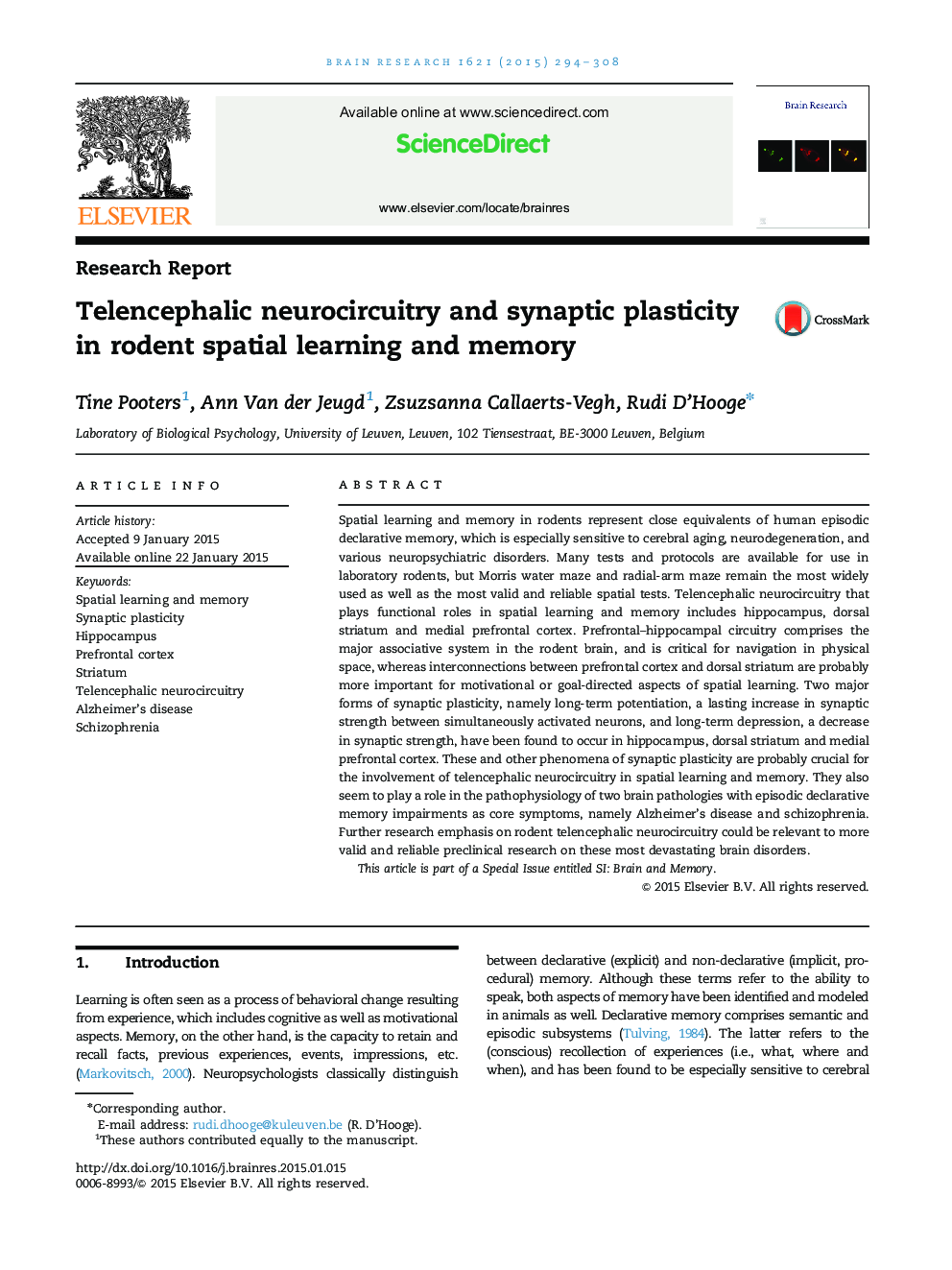| کد مقاله | کد نشریه | سال انتشار | مقاله انگلیسی | نسخه تمام متن |
|---|---|---|---|---|
| 6262738 | 1613818 | 2015 | 15 صفحه PDF | دانلود رایگان |
- Rodent spatial learning and memory is equivalent to human episodic declarative memory.
- Telencephalic neurocircuitry (TNC) is critical for rodent spatial learning and memory.
- Synaptic plasticity underlies this TNC involvement in rodent spatial learning.
- Valid and reliable research on brain disorders should focus on TNC-dependent learning.
Spatial learning and memory in rodents represent close equivalents of human episodic declarative memory, which is especially sensitive to cerebral aging, neurodegeneration, and various neuropsychiatric disorders. Many tests and protocols are available for use in laboratory rodents, but Morris water maze and radial-arm maze remain the most widely used as well as the most valid and reliable spatial tests. Telencephalic neurocircuitry that plays functional roles in spatial learning and memory includes hippocampus, dorsal striatum and medial prefrontal cortex. Prefrontal-hippocampal circuitry comprises the major associative system in the rodent brain, and is critical for navigation in physical space, whereas interconnections between prefrontal cortex and dorsal striatum are probably more important for motivational or goal-directed aspects of spatial learning. Two major forms of synaptic plasticity, namely long-term potentiation, a lasting increase in synaptic strength between simultaneously activated neurons, and long-term depression, a decrease in synaptic strength, have been found to occur in hippocampus, dorsal striatum and medial prefrontal cortex. These and other phenomena of synaptic plasticity are probably crucial for the involvement of telencephalic neurocircuitry in spatial learning and memory. They also seem to play a role in the pathophysiology of two brain pathologies with episodic declarative memory impairments as core symptoms, namely Alzheimer's disease and schizophrenia. Further research emphasis on rodent telencephalic neurocircuitry could be relevant to more valid and reliable preclinical research on these most devastating brain disorders.This article is part of a Special Issue entitled SI: Brain and Memory.
Journal: Brain Research - Volume 1621, 24 September 2015, Pages 294-308
